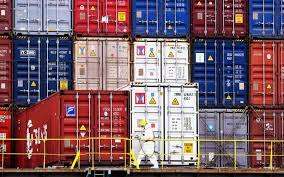
Incremental analysis helps companies decide whether or not to accept a special order. This special order is typically lower than its normal selling price. Incremental analysis also assists with allocating limited resources to several product lines to ensure a scarce asset is used to maximum benefit. The components required by the main factory are to be increased by 20 per cent.
- Once a decision has been made between the two possibilities, the company has a defined set of costs.
- The concept does not apply to financial accounting but can be applied to management accounting.
- However, care must be exercised as allocation of fixed costs to total cost decreases as additional units are produced.
- Also, fixed costs can be difficult to attribute to any one business segment.
- The concept of opportunity cost describes the reward or loss resulting from a decision made between respective alternatives.
The primary purpose of conducting a differential analysis is decision-making. So, we consider only relevant costs affecting the decision variables. For evaluation of alternatives on the basis of cost data only the differential costs are important for consideration; therefore, these costs are also called relevant costs. Net differential cost represents the extra cost of the rejected alternative; therefore, it is also referred to as incremental cost.
Opportunity Cost
Assume a company’s production cost rises from $20,000 to $25,000 due to an increase in the number of hours required to finish the project. Consider a corporation that manufactures plastic bags and purchases innovative equipment to double its present production of plastic bags. As soon as the company starts using the new equipment, the government outlaws the production of plastic bags in the country and makes it a crime for anybody to manufacture or sell plastic bags. The new legislation renders the machine and the plastic bags created outdated, and the corporation is powerless to overturn the government’s decision. Differential revenue (also called incremental revenue) is change in revenues that results from accepting one alternative over the other. Differential costs/expenses are the increase or decrease in costs/expenses that occur as a result of a decision.
Differential cost may be a fixed cost, variable cost, or a combination of both. Company executives use differential cost analysis to choose between options to make viable decisions to impact the company positively. The differential cost method is a managerial accounting process done on spreadsheets and requires no accounting entries.
INCOME SUMMARY ACCOUNT: Definition and How to Close
Long-run incremental cost (LRIC) is a forward-looking cost concept that predicts likely changes in relevant costs in the long run. It includes relevant and significant costs net 30 payment terms that exert a material impact on production cost and product pricing in the long run. They can include the price of crude oil, electricity, any essential raw material, etc.
2023-08-09 TSX:SWP Press Release Swiss Water Decaffeinated … – Stockhouse Publishing
2023-08-09 TSX:SWP Press Release Swiss Water Decaffeinated ….
Posted: Wed, 09 Aug 2023 07:00:00 GMT [source]
When a corporation wishes to raise its manufacturing capacity, the management may cut the selling price to boost sales. The corporation lowers the selling price to the point where it can still make a profit and cover its production costs. It consists of labour and material costs that vary with production; for example, as production increases, labour and material costs rise, and vice versa. It is computed by dividing the variable cost per unit of output by the number of units. Since there is no change in fixed costs in Scenario A, we can also use the company’s contribution margin ratio to find out the increase in profit just from the increase in sales. It is usually made up of variable costs, which change in line with the volume of production.
Incremental Cost Decisions
In this scenario, the differential in cost is $1,500 ($2,000 – $500). The move places the opportunity cost of choosing to stick to the old advertising method at $4,000 ($14,000 – $10,000). The $4,000 is the income that ABC would forego for remaining with the old marketing techniques and failing to adopt the more sophisticated marketing models. Differential cost and incremental cost are two different concepts, though at times they are interchangeably used. The former is defined as a future cost that differs from one alternative to another, while the latter represents an increase in cost of one alternative over the cost of another. As a result, the total incremental cost to produce the additional 2,000 units is $30,000 or ($330,000 – $300,000).
In the given problem, the company should set the level of production at 1,50,000 units because after this level differential costs exceed the incremental revenue. The difference in cost between two alternative decisions or a change in output levels is referred to as differential cost. When there are several possibilities to explore, and a decision must be made to select one option and discard the rest, the notion is applied. The notion is especially relevant in step costing scenarios, where generating one more unit of output may incur a significant additional cost.
Example of Differential Cost and Incremental Cost
Differential Costing is helpful in a comparative evaluation of the substitutes available. Among several alternatives, management opts for the most profitable one. ABC Company is a telecom operator that primarily relies on newspaper ads and the company website for marketing. However, a recently hired marketing director suggests that the company should focus on television ads and social media marketing to reach a broader client base. Incremental analysis is a problem-solving approach that applies accounting information to decision making. Incremental analysis can identify the potential outcomes of one alternative compared to another.
How to create an incremental snapshot in Azure – TechTarget
How to create an incremental snapshot in Azure.
Posted: Mon, 22 May 2023 07:00:00 GMT [source]
For example, suppose a corporation buys a machine that quickly becomes obsolete, and the products created by the equipment can no longer be sold to clients. The loss or gain incurred by a firm when one alternative is chosen at the expense of the other possibilities is referred to as the opportunity https://online-accounting.net/ cost. For example, A was offered a $50,000-a-year job, but he chose to complete his education in order to have a better future. Differential cost is the variation in costs (increase/decrease) between two available opportunities. Incremental costing is used in the context of an existing activity.
Join PRO or PRO Plus and Get Lifetime Access to Our Premium Materials
Incremental analysis is used by businesses to analyze any existing cost differences between different alternatives. The method incorporates accounting and financial information in the decision-making process and allows for the projection of outcomes for various alternatives and outcomes. Through incremental analysis, the revenues, costs, and possible outcomes of the alternatives can be identified. As a result, differential cost encompasses both fixed and semi-variable costs. As a result, its analysis focuses on cash flows, regardless of whether it is improved or not. As a result, all variable costs are not included in the differential cost and are only addressed on a case-by-case basis.

As a result, the exact rate of return for either choice is uncertain. Assume the fictitious corporation stated above decides not to purchase equipment and instead invests in the stock market. Alternatively, if the stocks perform well, the corporation could benefit greatly. The opportunity cost of sticking with the old advertising technique is now $4,000 ($14,000 – $10,000).
